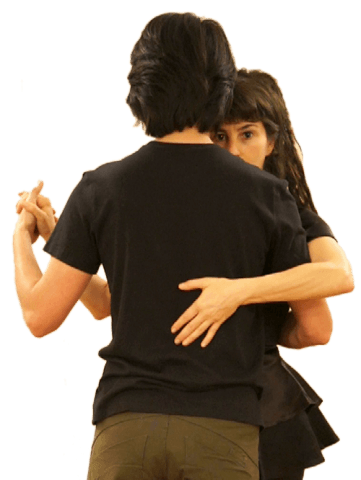Part 1: 29 October, 2012
This is a question I’ve asked myself repeatedly. I think mostly my view has been that it’s not, but that it could be. Note that I have no training in dance as a fine art, and I don’t know the relevant concepts and terminology, so my criteria are drawn from my experience as a painter and sculptor (this was my focus in high school and through my Bachelor’s degree):
- Fine art requires a high level of skill (but this does not distinguish it from craft). The artist needs a big vocabulary in order to execute their task fully. Even if a painter prefers abstract style, s/he needs the capacity to render in case a particular vision requires elements of realism.
- It is unique. It is not a repetition. Art promises and is expected to offer something new. It cannot be mere entertainment or decoration. This is why some people claim that it cannot be pleasant and must be controversial. I think it can be beautiful and delightful as long as it offers a new way of doing that.
- It has an artist, who has a personal vision and biography of expression. Art is a view of society and reality from a position. It does not claim to be objective. Indeed the position is often that of what is termed in the social sciences an “outlier”. Those not well integrated into the society often have strikingly clear perspectives on its function.
- Art is sparked and infused with insight that comes from beyond the artist, for which s/he is a vehicle. The artist cultivates an openness to perception, meaning, and intervention that is beyond their own rational understanding, and provides their courage and skills as a medium for the expression of this truth that flows through them, even if they don’t understand it.
So, does tango meet these criteria?
- It does require a high level of skill — higher than the other popular dances, especially with regard to the methods of connection between the partners and the strength and body control required and cultivated even by nonprofessional dancers.
- It does have an artist. Unlike other classical and contemporary dance, the tango leader is not a mere body for the choreographer’s expression. S/he is on her own, with the music, in real time. The tango leader, unlike the contemporary dancer (who hopes to extend static competence at her maximum skill) and like the visual artist, gets better with age. Experience is seen to bring depth of feeling and expression, subtlety, and humor that a young dancer, no matter how agile and creative, cannot evince. I guess it is also worth noting that the social improvising tango dancer is simultaneously choreographer and performer.
- Where tango wavers, at least according to my criteria, is whether it is unique and whether it has the capacity to convey profound insight. This is why it is formally classified as a popular or “cultural” artifact (in Germany, as a sport). It does not appear to offer a profound and unique insight. Stage performances rely on entertaining clichés, rarely push the boundaries of the vocabulary, and are therefore viewed as craft. Most tango dancing is done in a social context, where it is only visually entertaining to afficionados, and it is highly repetitive.
As I have argued in another post, tango dancing could be as diverse as piano music. This doesn’t quite address the problem as it suggests that tango is a piano, not that it is art. What it suggests is that tango dancers could be making unique expressions if they were to more creatively mobilize the vocabulary of tango (which already provides resources on the same order of magnitude as a piano). Just as musicians and contemporary choreographers recombine sounds and movements in expressive ways, tango dancers could create similar expressions. The best dancers in the world are certainly trying to do this. (Tango choreographers are a bit stilted by selling the cliché, but in Buenos Aires at least, artists are combining tango with theater, circus, and other arts in an attempt to use it to express more.)
Another mode of inquiry would require a deeper understanding of the debates in contemporary dance. When I watch it as a tango dancer, I miss what is most moving to me, connection. While contact improvisation offers this and its tools are sometimes used by contemporary dancers, tango provides a realism of consequence where contact dancers babble. To me this is part of what makes tango unique as an art form, and it is why I can’t stand tango choreography, because it destroys this essential dimension of the dance. (It is also part of why I have no patience with untrained and smug followers, because they break this contract. Tango as an art cannot be about the leader charming and seducing a bumbling lady, without ever letting on. There it is indeed social, or at best therapeutic.) If its unique contribution as an art is about consequence, which depends on its unique methods of connection, then it requires maximum faith and authenticity in that relation.
Entry 11: 2015-2017 Tango art with Germain Cascales.














